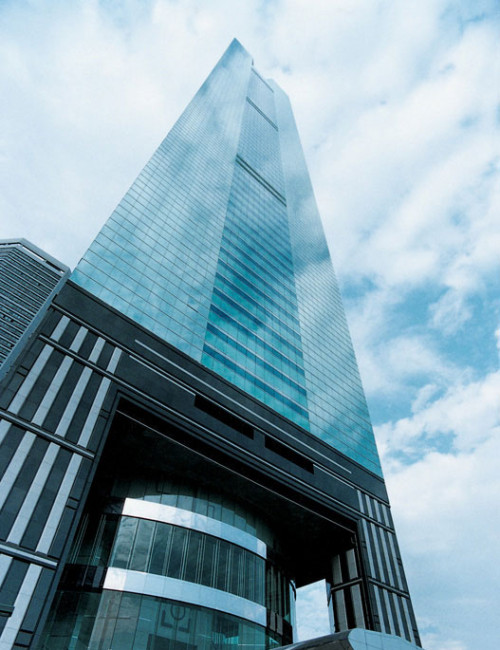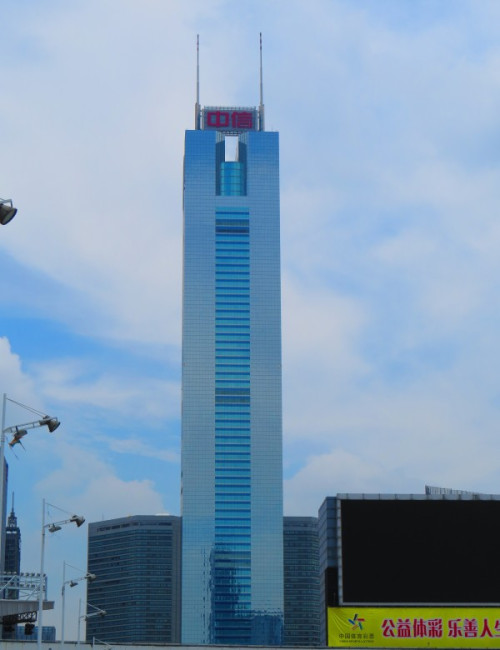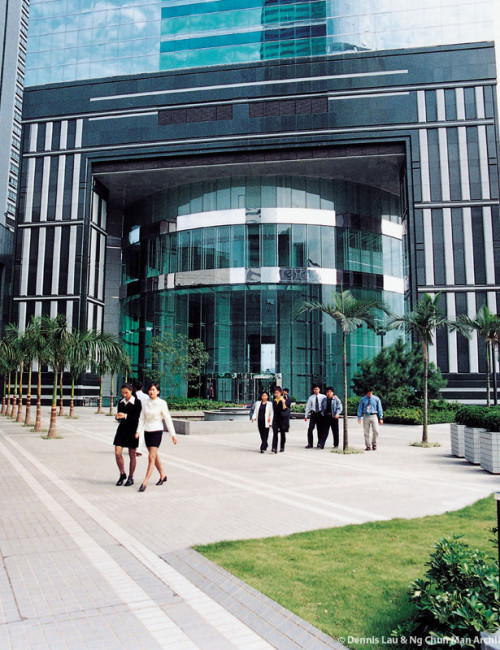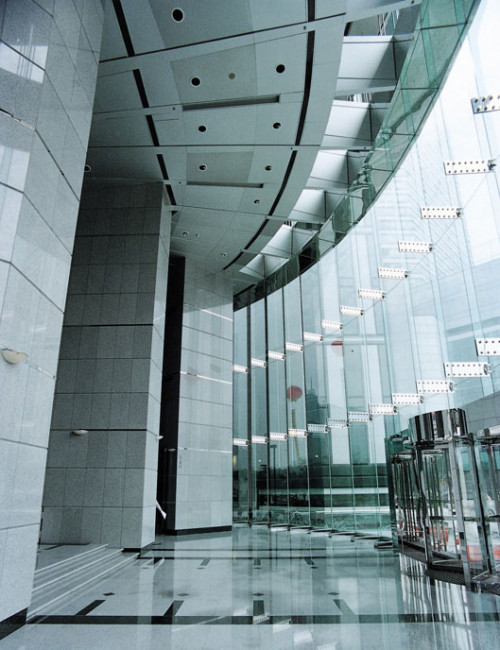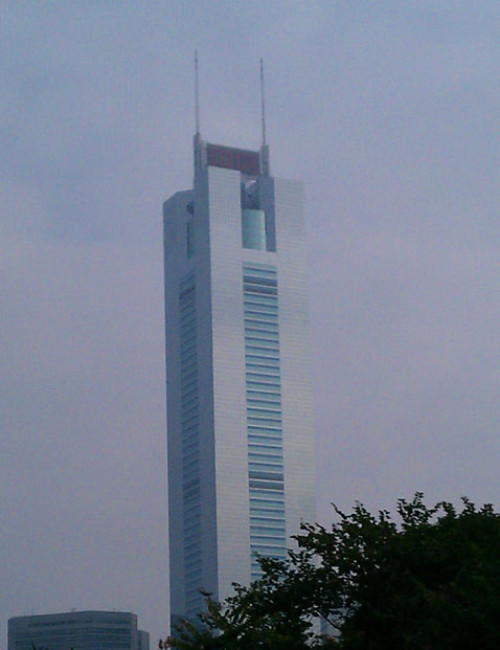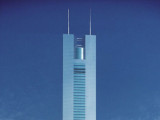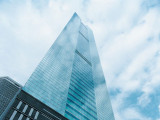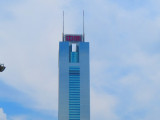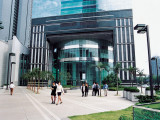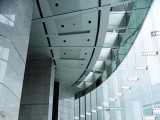Height rank
CITIC Plaza
Guangzhou
-
Metrics
You must be a CTBUH Member to view this resource.
Official Name
CITIC Plaza
Other Names
Sky Central Plaza, China International Trust & Investment Plaza
Name of Complex
Type
Building
Status
Completed, 1996
Country
City
Postal Code
510613
Function
A mixed-use tall building contains two or more functions (or uses), where each of the functions occupy a significant proportion of the tower's total space. Support areas such as car parks and mechanical plant space do not constitute mixed-use functions. Functions are denoted on CTBUH "Tallest Building" lists in descending order, e.g., "hotel/office" indicates hotel function above office function.
office
Structural Material
Both the main vertical/lateral structural elements and the floor spanning systems are constructed from steel. Note that a building of steel construction with a floor system of concrete planks or concrete slab on top of steel beams is still considered a “steel” structure as the concrete elements are not acting as the primary structure.
Reinforced Concrete
Both the main vertical/lateral structural elements and the floor spanning systems are constructed from concrete which has been cast in place and utilizes steel reinforcement bars.
Precast Concrete
Both the main vertical/lateral structural elements and the floor spanning system are constructed from steel reinforced concrete which has been precast as individual components and assembled together on-site.
Mixed-Structure
Utilizes distinct systems (e.g. steel, concrete, timber), one on top of the other. For example, a steel/concrete indicates a steel structural system located on top of a concrete structural system, with the opposite true of concrete/steel.
Composite
A combination of materials (e.g. steel, concrete, timber) are used together in the main structural elements. Examples include buildings which utilize: steel columns with a floor system of reinforced concrete beams; a steel frame system with a concrete core; concrete-encased steel columns; concrete-filled steel tubes; etc. Where known, the CTBUH database breaks out the materials used in a composite building’s core, columns, and floor spanning separately.
composite
Official Website
Height
390.2 m / 1,280 ft
Floors Above Ground
80
# of Parking Spaces
904
# of Elevators
36
Tower GFA
205,239 m² / 2,209,174 ft²
-
By function
You must be a CTBUH Member to view this resource.
-
By material
You must be a CTBUH Member to view this resource.
Material Supplier
Material Supplier refers to organizations which supplied significant systems/materials for a building project (e.g. elevator suppliers, facade suppliers, etc).
Material Supplier refers to organizations which supplied significant systems/materials for a building project (e.g. elevator suppliers, facade suppliers, etc).
You must be a CTBUH Member to view this resource.
Developer
China International Trust and Investment
Architect
Usually involved in the front end design, with a "typical" condition being that of a leadership role through either Schematic Design or Design Development, and then a monitoring role through the CD and CA phases.
Dennis Lau & Ng Chun Man Architects & Engineers (HK) Ltd. (DLN)
Structural Engineer
The Design Engineer is usually involved in the front end design, typically taking the leadership role in the Schematic Design and Design Development, and then a monitoring role through the CD and CA phases.
Maunsell AECOM Group
MEP Engineer
The Design Engineer is usually involved in the front end design, typically taking the leadership role in the Schematic Design and Design Development, and then a monitoring role through the CD and CA phases.
Gammon Construction Limited; Tridant Engineering Company Limited
Main Contractor
The main contractor is the supervisory contractor of all construction work on a project, management of sub-contractors and vendors, etc. May be referred to as "Construction Manager," however, for consistency CTBUH uses the term "Main Contractor" exclusively.
The main contractor is the supervisory contractor of all construction work on a project, management of sub-contractors and vendors, etc. May be referred to as "Construction Manager," however, for consistency CTBUH uses the term "Main Contractor" exclusively.
Hong Kong Construction (Holdings) Limited; Kumagai Gammon Joint Venture
Other Consultant
Other Consultant refers to other organizations which provided significant consultation services for a building project (e.g. wind consultants, environmental consultants, fire and life safety consultants, etc).
Other Consultant refers to other organizations which provided significant consultation services for a building project (e.g. wind consultants, environmental consultants, fire and life safety consultants, etc).
Langdon & Seah
Material Supplier
Material Supplier refers to organizations which supplied significant systems/materials for a building project (e.g. elevator suppliers, facade suppliers, etc).
Material Supplier refers to organizations which supplied significant systems/materials for a building project (e.g. elevator suppliers, facade suppliers, etc).
Armstrong World Industries
CTBUH Initiatives
Top Company Rankings: The World’s 100 Tallest Buildings
13 October 2016 - CTBUH Research
About CITIC Plaza
CITIC Plaza is the centerpiece of the Tien He development in Guangzhou and acts as a centralizing hub for the neighborhood. The tower complex is at the center of a four-kilometer-long axis of gardens and boulevards stretching between Guangzhou East Railway Station, Guangzhou’s main railway station in the north, and Haixinsha Island to the south. The symmetry of the CITIC Plaza development complements the formality of the surrounding urban axis, with the main tower being the first sight that visitors see as they emerge from the main railway station.
The tabula rasa planning of the Tien He district provided few cues, save for its symmetry, for the form of CITIC Plaza. The layout of the tower is therefore largely driven by pragmatic principles of office planning, unconstrained by the site characteristics that so often influence the forms of buildings elsewhere. In plan, the tower is incorporated in the larger development through a superimposed circle-on-square geometry that traditionally symbolizes the unity of sky, represented by the circle, and land, which is represented by the square.
The fitting out and detailing of the tower reflects the design elements present throughout the larger development. External and internal finishes of polished grey granites, glazed ceramic tiles, and turquoise and blue tinted reflecting glass offer a consistent and simple palette of colors and textures throughout the building. The Envelope is virtually free of indentations that would increase façade area and the associated construction, running, and maintenance costs. Instead, the great scale of the structures is visually attenuated, and its symmetry amplified, by the application of contrasting colors of glass and stone finishes. The tower’s reserved simplicity, yet notable presence in the Tien He district have earned it a reputation as a sturdy and robust example of the Guangzhou spirit.
Subscribe below to receive periodic updates from CTBUH on the latest Tall Building and Urban news and CTBUH initiatives, including our monthly newsletter. Fields with a red asterisk (*) next to them are required.
View our privacy policy


